Self-Branding Practices of Social Media Influencers—A Case Study of Jiaqi Li
DOI: 10.23977/mediacr.2025.060418 | Downloads: 11 | Views: 480
Author(s)
Ruyue Liu 1
Affiliation(s)
1 Shandong Yingcai University, Jinan, China
Corresponding Author
Ruyue LiuABSTRACT
Social media influencers (SMIs) have become increasingly popular over the past few decades. This research focuses on Chinese influencer Jiaqi Li, who exhibits specific gender characteristics and emotions as self-branding practices in his living stream. By adopting Hochschild's (2015) work "emotional labour" and applying gender theories in the digital media context, this research aims to unpack the self-branding building that underpins the expression of SMIs. By analyzing the live-streaming clips of Jiaqi Li, this paper argues that the logic of emotion and gender has permeated digital culture. This study aims to give a comprehensive, grounded understanding of the role of influencers in self-branding practices on social media.
KEYWORDS
Social Media Influencer; Self-Branding; Emotional Labour; Gender TheoryCITE THIS PAPER
Ruyue Liu, Self-Branding Practices of Social Media Influencers—A Case Study of Jiaqi Li. Media and Communication Research (2025) Vol. 6: 152-158. DOI: http://dx.doi.org/10.23977/mediacr.2025.060418.
REFERENCES
[1] Statista. (2018). Daily time spent on social networking by internet users worldwide from 2012 to 2018 (in minutes). Retrieved from https://www.statista.com/statistics/433871/daily-social-media- usage-worldwide/
[2] Iqbal, M. (2019).TikTok Revenue and Usage Statistics. Retrieved February 27, from https: //www.businessofapps. com/data/tik-tok-statistics/
[3] Chandler, D., & Munday, R. (2016). influencer marketing. In A Dictionary of Social Media. Retrieved from http: //www. oxfordreference. com/view/10.1093/acref/9780191803093. 001. 0001/acref-9780191803093-e-632
[4] China daily. (2019). New selling point: Social media influencers. Retrieved March 3, from http: //www.chinadaily. com. cn/a/201903/04/WS5c7cd53ba3106c65c34eca34.html
[5] Global time. (2018). Lipstick King: The man who sells most lipsticks in China. Retrieved November 15, Retrieved from http://www.globaltimes.cn/content/1127510.html
[6] Ki, C. W. C. and Kim, Y. K., (2019). The mechanism by which social media influencers persuade consumers: The role of consumers’ desire to mimic. Psychology & Marketing. 36(10), 905-922.
[7] Abidin, C., (2016). "Aren't these just young, rich women doing vain things online?" Influencer selfies as subversive frivolity. Social Media+ Society. 2(2).
[8] Saul, H. (2016). Instafamous: Meet the social media influencers redefining celebrity. The Independent. Available from: http: //www. independent. co. uk/news/people/instagrammodelnatasha-oakleyiskra-lawrence-kayla-itsines- kendalljenner-jordyn-woodsa6907551.html
[9] Marshall, D. (2010). The promotion and presentation of the self: Celebrity as marker of presentational media. Celebrity Studies. 1(1), 35-48.
[10] Bennett, J. and Thomas, S., (2014). Tweet celebrity. Celebrity Studies. 5(4), 501–503.
[11] Tse, T., Leung, V., Cheng, K., and Chan, J., (2018). A clown, a political messiah or A punching bag? Rethinking the performative identity construction of celebrity through social media. Global Media and China. 3(3), 141-157.
[12] Senft, T. M., (2013). Microcelebrity and the branded self. In: J. Hartley, Burgess, and A. Bruns, eds. A companion to new media dynamics. Chicester, West Sussex:Wiley- Blackwell. pp. 346-354.
[13] Jerslev, A., (2016). Media times | In the time of the microcelebrity: Celebrification and the YouTuber Zoella. International Journal of Communication. 10, 19.
[14] Thomas, S., (2014). Celebrity in the 'Twitterverse': History, authenticity and the multiplicity of stardom Situating the 'newness' of Twitter. Celebrity studies. 5(3), 242-255.
[15] Deller, R., (2011). Twittering on: Audience research and participation using Twitter. Participations. 8(1), 216-245.
[16] Barbour, K., Lee, K., & Moore, C. (2017). Online persona research: An Instagram case study. Persona Studies, 3(2), 1-12.
[17] Fägersten, K. B., (2017). The role of swearing in creating an online persona: The case YouTuber PewDiePie. Discourse, Context & Media. 18, 1-10.
[18] Pooley, J., (2010). The consuming self: From flappers to Facebook. In: M. Abonczyk and D. Powers, eds. Blowing up the brand: Critical perspectives on promotional culture. New York: Peter Lang. pp. 71-89.
[19] Cocker, H. L. and Cronin, J., (2017). Charismatic authority and the YouTuber: Unpacking the new cults of personality. Marketing theory. 17(4), 455-472.
[20] Pruchniewska, U. M., (2018). Branding the self as an "authentic feminist": Negotiating feminist values in post-feminist digital cultural production. Feminist Media Studies. 18(5), 810-824.
[21] Duffy, B. E. and Hund, E., (2015). "Having it all" on social media: Entrepreneurial femininity and self-branding among fashion bloggers. Social Media+ Society. 1(2).
[22] Wang, S. (2020). Chinese affective platform economies: dating, live streaming, and performative labor on Blued. Media, Culture & Society, 42(4), 502-520.
[23] Marwick, A. E. and Boyd, D., (2011). To see and be seen: Celebrity practice on Twitter. Convergence. 17(2), 139-158.
[24] Muntean, N. and Petersen, A. H., (2009). Celebrity Twitter: Strategies of intrusion and disclosure in the age of technoculture. M/C Journal. 12(5).
[25] Giles, D. C. (2002). Parasocial interaction: A review of the literature and a model for future research. Media psychology, 4(3), 279-305.
[26] García-Rapp, F. (2017). Popularity markers on YouTube's attention economy: the case of Bubzbeauty. Celebrity studies, 8(2), 228-245.
[27] Marwick, A. E., (2015). Instafame: Luxury selfies in the attention economy. Public Culture. 27(75), 137-160.
[28] Hearn, A., (2008). Meat, Mask, Burden: Probing the contours of the branded self. Journal of consumer culture. 8(2), 197-217.
[29] Lair, D. J., Sullivan, K., and Cheney, G., (2005). Marketization and the recasting of the professional self: The rhetoric and ethics of personal branding. Management communication quarterly. 18(3), 307-343.
[30] Marwick, A. E., (2013). Status update: Celebrity, publicity, and branding in the social media age. New Haven: Yale University Press.
[31] Khamis, S., Ang, L., & Welling, R. (2017). Self-branding,'microcelebrity'and the rise of social media influencers. Celebrity studies, 8(2), 191-208.
[32] Hochschild, A. R. (1983). The Managed Heart: Commercialization of Human Feeling. Berkeley: University of California Press.
[33] Fanlore (2022). Fan Labor. Available from:https://fanlore.org/wiki/Fan_Labor
[34] China daily. (2018). Male beauty blogger finds road to wealth on Taobao. Retrieved January 10, from http://www. chinadaily.com.cn/a/201801/10/WS5a55b328a3102e5b17371e20_1.html
[35] Alizila. (2019). The rise of male beauty in China. Retrieved March 27, from https://www. alizila. com/the-rise-of- male-beauty-in-china/
[36] Simpson, M. (2002). Meet the metrosexual. Salon. Retrieved July 22, from https://www. salon. com/ 2002/07/22/metrosexual/
[37] Kimmel, M. (1994). Masculinity as homophobia: fear, shame, and silence in the construction of gender identity. In H. Brod & M. Kaufman (Eds.), Research on men and Masculinities Series:Theorizing masculinities (pp. 119-141). Thousand Oaks, CA: SAGE Publications, Inc.
[38] Carli, L. (2001). Assertiveness. In Worell,Judith(ed.). Encyclopedia of women and Gender: sex similarities and differences and the impact of society on gender, Volume1. San Diego, California: Academic Press. pp. 157–168. ISBN 9780122272462.
[39] Thomas, R. M. (2001), Feminist perspectives, in Thomas, R. Murray, ed. (2001). Recent theories of human development. Thousand Oaks, California: Sage. p. 248.
[40] Bourdieu, P. (1983). Ökonomisches Kapital, kulturelles Kapital, soziales Kapital. Soziale Ungleichheiten (Soziale Welt, Sonderheft 2), edited by Reinhard Kreckel. Goettingen: Otto Schartz & Co. pp. 249.
[41] Portes, A. (1998). Social Capital: Its Origins and Applications in Modern Sociology. Annual Review of Sociology. 24: 1–24.
[42] Marxism. (2013). Definition of Capital on Marxists. Encyclopedia of Marxism. Marxism.org. Retrieved February 8, from https://www.marxists.org/glossary/terms/c/a.htm#capital
| Downloads: | 19798 |
|---|---|
| Visits: | 456018 |
Sponsors, Associates, and Links
-
Journal of Language Testing & Assessment
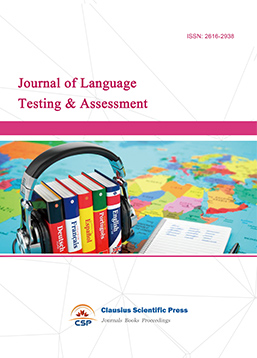
-
Information and Knowledge Management

-
Military and Armament Science

-
Journal of Human Movement Science
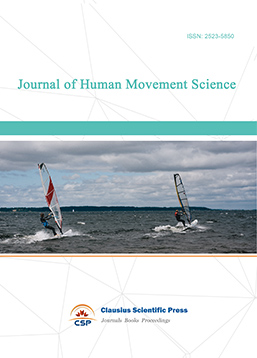
-
Art and Performance Letters

-
Lecture Notes on History
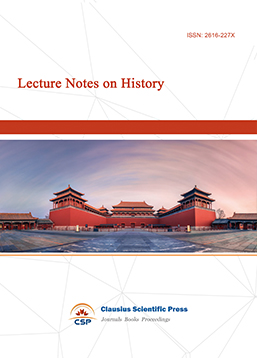
-
Lecture Notes on Language and Literature

-
Philosophy Journal
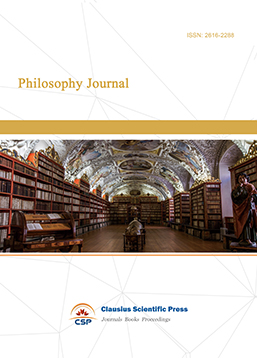
-
Science of Law Journal

-
Journal of Political Science Research
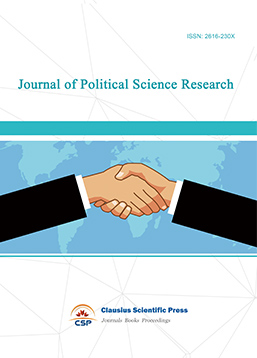
-
Journal of Sociology and Ethnology
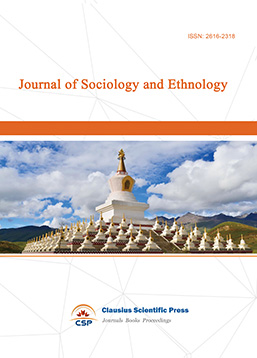
-
Advances in Broadcasting


 Download as PDF
Download as PDF